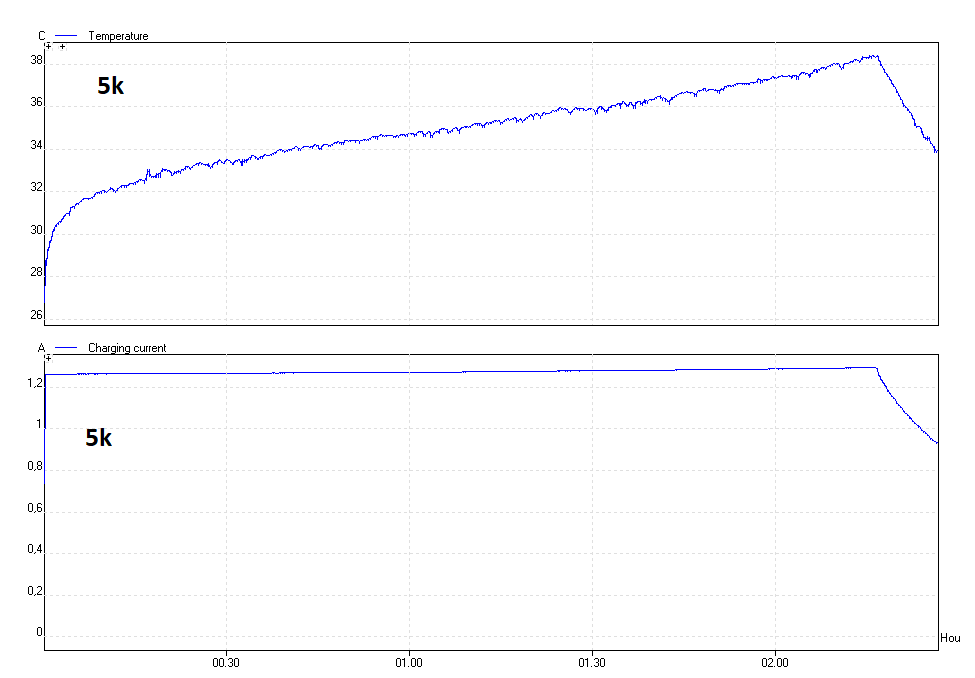Hello,
I’m having problems with the charge current on BQ25886 increasing over time. It starts out with the correct value but increases about 1.5 mA - 2 mA / minute, until it hits the CV stage or input current limit.
In the schematic the CE pin is pulled high when the battery is not inserted, and a resistor in the battery pack pulls it low. I have also tied CE low permanently, but it has no effect. I have also tried lower charge currents, but the behavior is the same.
Sparying cold spray on the IC does temporarily bring the charging current down, but it does increase back again shortly. The IC does not get overly hot, the charging efficiency is 90+%, but cooling it down does seem to have an effect.
I do have the EVK, and I have experimented with it as well. It also seems to increase the charge current over time, but much more slowly, at about 0.25 mA / minute.
I have attached images of the schematic and layout.
Thanks!





